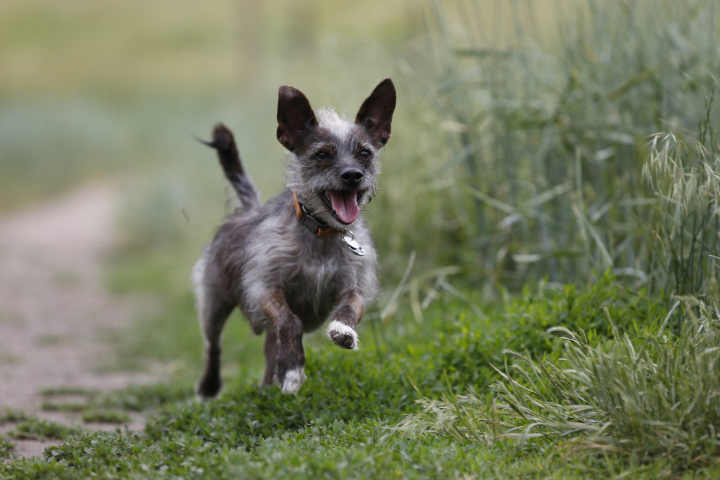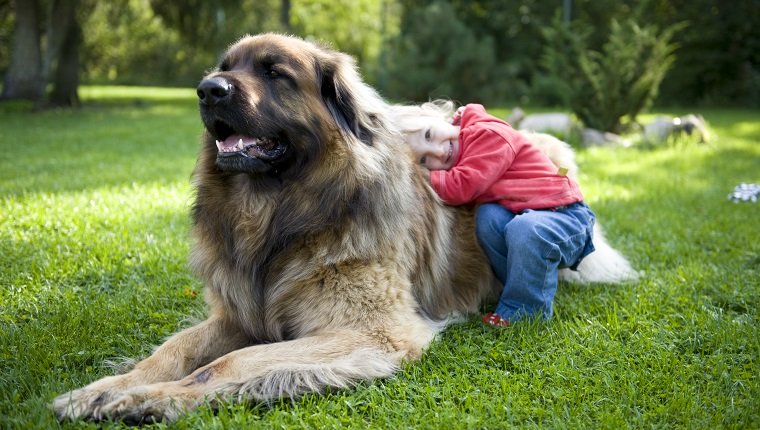Do you and your dog enjoy going out on a winter’s day? Do you enjoy playing in the snow together? Or maybe you have a puppy or a senior dog that would prefer staying curdled up in nice, warm spot?
Connect with a verified veterinarian in minutes. Licensed vets are available 24/7 to answer your questions. No need to worry about your furry family member.
When it comes to winter and our fur babies, there are some important things to keep in mind. Winter can be as hard on our pets as it is on us, especially on pets left outside. During the cold, harsh weather there are some things you can do to make sure your dog stays healthy and happy all season long.
Cold Weather Tips for Your Dog
1. See the vet
It’s a good idea to get an appointment with the vet to get your dog’s health checked. A wellness visit can make sure your fur baby is ready for winter weather. If the vet finds a problem, it can be addressed before the harsh cold of winter sets in. This is especially beneficial for puppies and older dogs who aren’t quite as resilient in cold weather.
2. Avoid shaving or cutting fur
Your dog’s fur coat is his protection against all types of weather, including winter cold and snow. If his hair’s cut too short, he could more easily and quickly develop hypothermia or become sick. Avoid shaving or cutting his fur, unless his fur is heavily matted and/or full of ticks and fleas, etc. It’s also a good idea to keep your fur baby’s fur in good shape with weekly (or more often) brushing and combing. Matted and tangled hair could keep your dog’s coat from keeping him warm.
3. Tolerance to cold
Keep your dog’s tolerance to cold in mind when he has to go out. Dogs that have a double-layered, thick coat may enjoy spending more time out in the snow and cold. However, a small dog, with short fur, will more quickly become cold and could even develop hypothermia if left out too long. Dogs with a low tolerance to cold may need to wear protective clothing, such a dog’s winter coat when outside for any length of time, even for a short potty break.
4. Keep your dog inside as much as possible
Dogs need to be indoors when the weather’s cold, especially when the temperature dips below zero. Bring your dog inside when it’s cold. However, if your canine companion must be outside, consider fitting his dog house with a heater to keep him warm.
5. Dry off
Always dry your dog off when he comes inside if he’s been out in the snow, ice and sleet. Be sure to wipe down his back, paws and stomach. Check his feet for rock salt and other chemicals used to melt ice on sidewalks.
These chemicals can hurt the skin on his paws and could be poisonous if he licks his feet and swallows the chemical
6. Keep potty breaks outside short
This is especially important for puppies and senior dogs who are not as tolerant of the cold. You might consider using “pee pads” used to potty train puppies. These can be used for puppies or older dogs who just can’t stand the cold outside.
Dog Hypothermia First Aid
Do you know what to watch for in case your dog develops hypothermia? Do you know how to treat hypothermia in your dog? It’s a good idea to create a dog first aid kit and here are some tips on what to do if your dog develops hypothermia.
Hypothermia is a dangerous medical condition that can develop when your dog becomes too cold. If your dog cold nose and ears, he could be experiencing mild hypothermia. As the condition worsens, his body temperature falls to dangerously low levels that can affect his heart rate, breathing and can lead to neurological problems and even death.
The signs and symptoms of hypothermia in dogs include:
- Trembling and shivering
- Sleepy and lethargic
- Weak
- Skin and fur will become cold to the touch
- Body temperature falls to below 95 F.
- Slower heart rate
- Inner eyelids and gums turn pale or blue
- Walking becomes difficult
- Breathing becomes difficult
- Coma/stupor/unconsciousness
A dog can quickly develop hypothermia, or it can develop over a matter of hours. This will depend on the individual dog, how much fur he has, his age and physical condition and the temperature outside. Dogs can also quickly develop hypothermia if they become wet in addition to becoming cold.
Treating your dog for hypothermia needs to happen as quickly as possible—don’t forget, hypothermia can lead to death. To help your dog, try this dog first aid:
1). Bring your dog indoors where it’s warm.
2). Wrap your fur baby up in anything you have on hand, including coats, blankets and turn up the heat in the room. If you have a fireplace or woodstove, it can be helpful to place your dog in front of the warmth, with the blankets and coats on. You can also use your own body warmth or even warm (not hot) water bottles. Heating pads may also be a good option but be sure they’re not too hot and monitor your dog’s use of the heating pad in order to avoid burns.
3). If your dog loses consciousness or has trouble breathing, call the vet as soon as possible. At this point it’s critical to get your vet’s advice and possibly get your dog to the vet’s office for treatment. One important note, if your dog is having serious symptoms of hypothermia, then be careful about moving him. Be sure to move him slowly and gently, as vigorous sudden movement could cause him to have a heart attack.
4). Encourage your dog to drink warm liquids such as broth. This will help raise his core temperature.
5). Check your dog’s temperature. If it’s still below 95 F, then call the vet and get your dog treated as soon as possible.
You can help your dog avoid hypothermia by keeping him indoors when it’s freezing or below freezing outside
Only let him out for short periods. And when he does go out, be sure he has something warm on, such as a dog sweater or coat, and even protect his paws with dog boots.

Review symptoms, medications & behavior to keep your pets healthy with a Vet Online in just minutes.
Ask a Vet Live NowIs Eating Snow Safe for Dogs?
Is snow bad for dogs to eat? That’s a great question! Snow is usually safe to eat; however, if your dog eats too much, he could develop an upset stomach and unhappy digestive system. Eating too much snow can also lower your dog’s core temperature, leading to hypothermia. Just monitor how much snow he eats—keep it to a minimum and he should be OK.
Dog Limping After Running in Snow
If your dog starts limping after running in the snow, he could be suffering some type of injury or possibly from a medical condition such as arthritis. Why do dogs limp after enjoying time in the snow?
The most common causes are:
Problems with his paw(s): it’s possible your dog has developed snow build-up between his toes, he could have frostbite, or his paws could even be cracked and bleeding from becoming overly dry. Contact with de-icing chemicals (rock salt, etc.) can also cause your dog to develop problems with his paws. Check his paws to see if there’s a problem, and then treat it quickly—especially frostbite and ice build-up between his toes.
Muscle/tendon/ligament injury: your dog could have injured a muscle, tendon or ligament while he was romping in the snow. If your dog’s limping, be sure to check him over. Look for any signs of swelling and pain. Jumping through the snow or even running on ice can cause these types of injuries. Try to avoid letting your dog walk or run on icy patches.
If your dog’s having a lot of trouble with his paw or seems to be in excessive pain, be sure to call the vet for advice. You may even need to take your fur baby in for an exam to be sure of what’s going on. Quick diagnosis and treatment will help to limit the problem, enabling your dog to have a faster recovery.
Winter Dog Boots Cold Climates
It may seem funny to think of dogs wearing boots in the winter; however, did you know that sled dogs that run the Iditarod in Alaska wear doggie snow boots? How can boots help your dog’s paws in the winter?
Dog boots offer protection for your dog’s paws from the ice and snow. Not only that, but they can also protect his feet from being cut by unexpected chunks of ice and other sharp objects hidden in the snow. Doggie snow boots also offer protection from de-icing chemicals, including rock salt. The chemicals can build-up on your dog’s feet and he may lick his feet, accidentally ingesting the chemicals, which can be poisonous for dogs. Boots also give your fur baby more traction on the snow and ice, which is especially helpful for older dogs.
Here are some boots that could save your dog’s feet in the winter:
Petacc Dog Shoes: these water resistant dog boots are anti-slip in the snow and will keep your fur baby’s feet warm on a cold day. The material is flexible, skid-resistant and waterproof, giving your dog the traction he needs, while keeping his feet warm and dry. The boots are easy to put on and are fastened with two long, adjustable straps with reflective Velcro.
EXPAWLORER Waterproof Dog Boots: keep your dog’s feet warm and dry with these dog boots. They feature Velcro fasteners to keep the boots on, while making them easy to take off when your dog’s done playing in the snow. The grooved soles give your pup better traction while protecting his feet from the cold. These boots are waterproof, durable, flexible and can be warm indoors or outdoors in wet, dry, hot and cold conditions.
We hope this guide will help you keep your dog happy and warm all through the winter season! We wish you and your fur baby all the fun of the winter snow!
Related Sources: TAMU Humane Society AVMA
Connect with a verified veterinarian in minutes. Licensed vets are available 24/7 to answer your questions. No need to worry about your furry family member.

Kim
Kim is a talented author, who loves animals especially dogs. She engaged in writing books and articles relating to animals a decade ago. Kim resides in Chicago with her husband and son. The family is the proud owner of a dog and a parrot (Jack and Lily). Kim wanted more than these two pets, but her husband put his foot down... She often visits elementary schools to talk to the kids about what she learned about pets and how they could learn from them.
Review symptoms, medications & behavior to keep your pets healthy with a Vet Online in just minutes.
Ask a Vet Live Now



